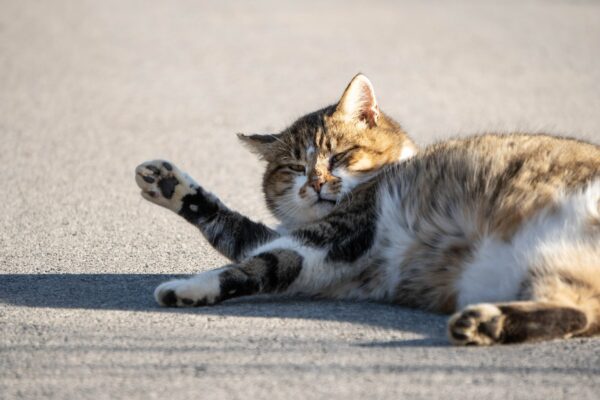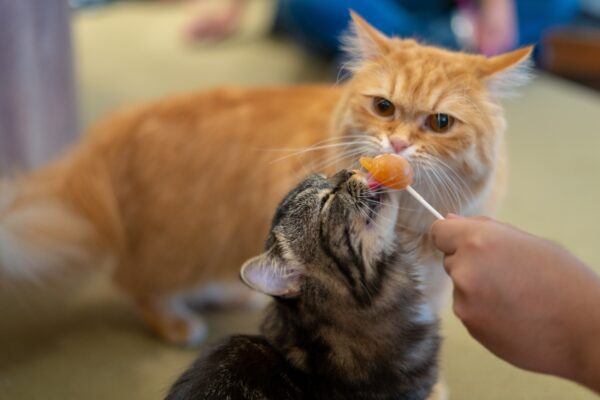As a devoted cat owner, ensuring the well-being of your feline companion is a top priority. One significant aspect of your cat’s health that requires attention is maintaining an optimal weight. Cat obesity is a prevalent issue that can lead to various health concerns, impacting your cat’s quality of life. In this comprehensive guide, we’ll explore the causes of cat obesity, the associated health risks, and practical tips to help your cat achieve and maintain a healthier weight.
Understanding Cat Obesity
1. Causes of Cat Obesity: Unraveling the Factors
- Cat obesity can result from a combination of factors, including overfeeding, lack of physical activity, and underlying health issues. Understanding these factors is crucial for developing an effective weight management plan.
- Tip: Assess your cat’s diet, exercise routine, and overall health to identify potential contributors to obesity.
2. Health Risks of Cat Obesity: Beyond Aesthetic Concerns
- Cat obesity is not just a cosmetic issue; it poses serious health risks. Obese cats are more susceptible to conditions such as diabetes, arthritis, respiratory issues, and a shortened lifespan. Maintaining a healthy weight is vital for your cat’s overall well-being.
- Tip: Regular veterinary check-ups can help identify and address obesity-related health concerns early.
3. Body Condition Scoring: Evaluating Your Cat’s Weight
- Use a body condition scoring system to assess your cat’s weight. A veterinarian can help determine if your cat is underweight, at an ideal weight, overweight, or obese. This assessment is essential for developing an appropriate weight management plan.
- Tip: Body condition scoring considers factors like the visibility of the waist and the ability to feel the ribs without excess fat covering.
Practical Tips for Cat Weight Management

1. Consult Your Veterinarian: Professional Guidance Matters
- Before implementing any changes to your cat’s diet or exercise routine, consult your veterinarian. They can provide valuable insights into your cat’s specific needs, rule out any underlying health issues, and recommend a tailored weight management plan.
- Tip: Your veterinarian may recommend a gradual weight loss approach to ensure your cat’s well-being during the process.
2. Portion Control: Quality Over Quantity
- Monitor your cat’s portion sizes to prevent overfeeding. Follow the feeding guidelines on the cat food packaging and use a measuring cup to ensure accuracy. Portion control is a fundamental aspect of weight management.
- Tip: Divide your cat’s daily food allowance into multiple small meals to help regulate hunger and prevent overeating.
3. Choose High-Quality Cat Food: Nutrient-Rich Options
- Opt for high-quality cat food that meets your cat’s nutritional needs. Look for formulations designed for weight management, as these often have a controlled calorie content. Avoid cat foods with excessive fillers and prioritize nutrient-rich options.
- Tip: Gradually transition to a new cat food to prevent digestive upset, and monitor your cat’s response to the change.
4. Interactive Play: Engage Your Cat in Physical Activity
- Increase your cat’s physical activity through interactive play. Use toys that mimic prey, encouraging your cat to stalk, pounce, and engage in natural hunting behaviors. Regular play sessions are not only beneficial for weight management but also promote mental stimulation.
- Tip: Experiment with different toys and activities to discover what engages your cat the most.
5. Introduce Puzzle Feeders: Mental Stimulation and Portion Control
- Puzzle feeders are devices that dispense food when manipulated by your cat. These tools not only provide mental stimulation but also slow down the eating process, promoting a sense of fullness and preventing overeating.
- Tip: Start with easy-to-use puzzle feeders and gradually progress to more challenging ones as your cat becomes accustomed to the concept.
6. Monitor Treat Intake: Mindful Rewards
- While treats can be a fun way to bond with your cat, they contribute to calorie intake. Choose low-calorie treats or break larger treats into smaller portions. Be mindful of the overall treat intake, as excessive treats can hinder weight management efforts.
- Tip: Use treats as occasional rewards for positive behavior or during interactive play sessions.
7. Regular Weigh-Ins: Track Progress
- Regularly weigh your cat to track their progress. This allows you to assess the effectiveness of the weight management plan and make adjustments as needed. Keep a record of your cat’s weight and share this information with your veterinarian during check-ups.
- Tip: Use the same scale for consistency, and weigh your cat at the same time of day for accurate measurements.
8. Create a Safe Outdoor Environment: Controlled Exploration
- If your cat enjoys outdoor activities, create a safe and controlled outdoor environment. Use harnesses or enclosed spaces to allow supervised exploration. Outdoor activities contribute to increased physical activity and can aid in weight management.
- Tip: Ensure the outdoor space is secure, free from potential hazards, and that your cat is comfortable with any safety equipment used.
9. Explore Weight-Loss Diets: Veterinary Formulations
- Your veterinarian may recommend specialized weight-loss diets formulated to support healthy weight management. These diets often have controlled calorie content, added nutrients, and are designed to promote a gradual and sustainable weight loss.
- Tip: Follow your veterinarian’s guidance on the duration and implementation of a weight-loss diet.
10. Foster a Supportive Environment: Consistency is Key
- Establish a consistent and supportive environment for your cat’s weight management journey. Enlist the cooperation of all family members to ensure adherence to the weight management plan. Consistency in feeding, play, and routine veterinary check-ups is crucial.
Tip: Keep an open line of communication with your veterinarian, sharing any concerns or observations regarding your cat’s weight and behavior.
Conclusion
Cat obesity is a manageable condition with the right approach to weight management. By consulting your veterinarian, implementing portion control, encouraging physical activity, and fostering a supportive environment, you can help your cat achieve and maintain a healthier weight.
Remember that weight management is a gradual process, and patience is key. Celebrate small victories along the way and stay committed to your cat’s well-being. With your dedication and a well-rounded weight management plan, you can contribute to your cat’s health, happiness, and a longer, more vibrant life.



